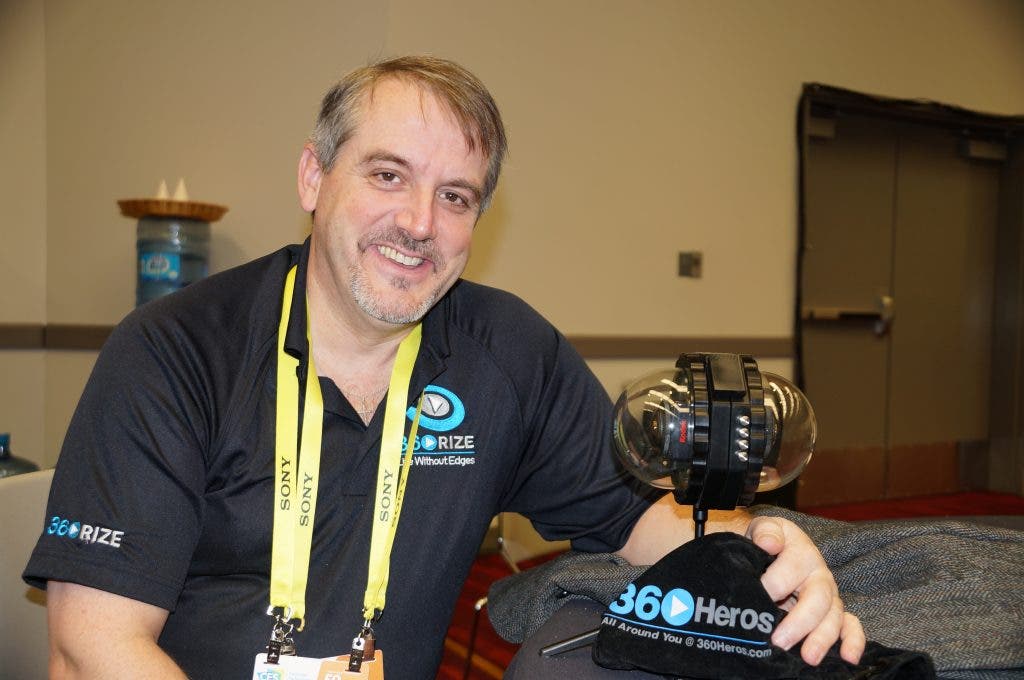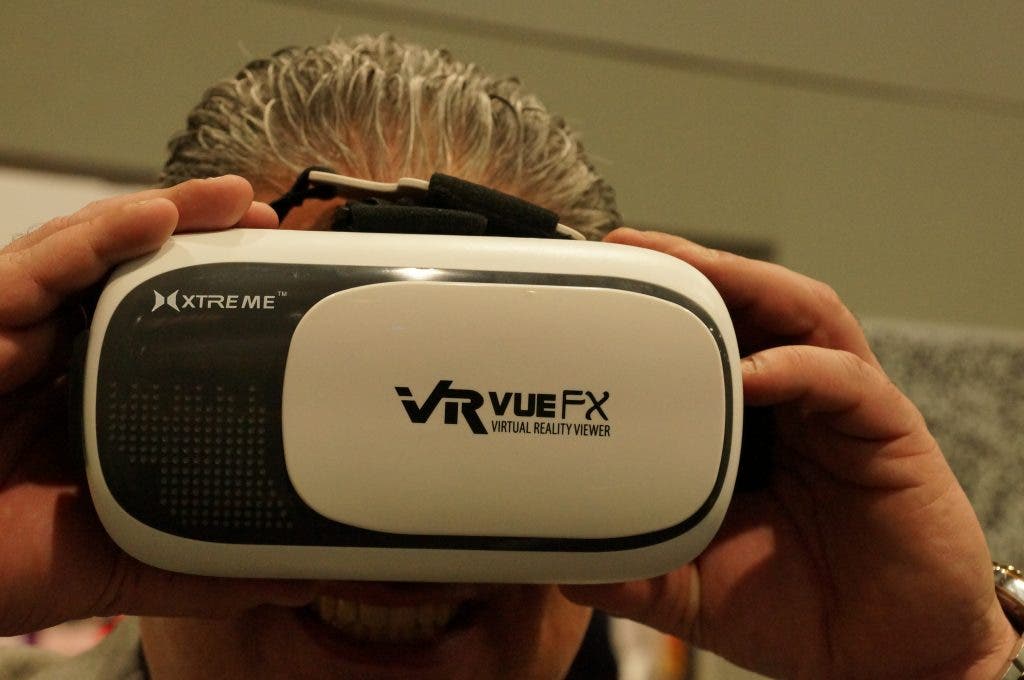2017 marks a major milestone for CES – it’s been 50 years since the first CES of 1967, and the transformation wrought by the digital age has been breathtaking. If any over-arching theme emerges from the spectacular diversity of products and services shown at CES 2017 it is the seemingly unstoppable movement toward total integration of everyone’s digital life experiences. In the automotive sector, this means self-driving, self-navigating, self-parking, total electric/electronic cars that are all connected to the Internet and remind you when service is required or appointments are upcoming. In the imaging arena, it means cameras with enhanced Wi-Fi, NFC, and Bluetooth connectivity that automatically save captured images to the Cloud and let you post and share them instantly in convenient sizes without having to go through separate steps, and to stream live video. It also means action-cam-equipped drones that are easier and safer to fly, and let users have an immersive flying experience via video headphones. In addition to vastly enhanced convenience, connectivity, and automation, many of the cameras shown at CES provide unprecedented performance, especially in the video domain. The ability to shoot 4K video at up to 60 fps and extract ultra hi-res stills from video clips are the result of significant advances in image processing software and sensor technology. Where will this all end? As a wise Fuji engineer told me many years ago it will never end. But CES 2017 gives us a glimpse of where it’s headed.

Panasonic’s GH5: More than meets the spec sheet
A stellar example if where mirrorless cameras are headed is Panasonic’s new GH5, which generated considerable buzz at the show. When I asked a Panasonic engineer to tell me in 3 words what’s so great about the GH5 he replied: 10-bit color. Basically, this means that the GH5 can record greater color subtleties and differentiate more colors than virtually any other mirrorless or DSLR camera currently on the market. And it’s also unique in its class in its ability to capture 4K video at 60 fps, and its 6K Photo mode lets you output impressive quality images from video clips. Two other things I discovered in handling this handsome beast is it’s an exquisite, ergonomically contoured object that fits your hands perfectly. And it’s evident its controls were designed by people who actually take pictures. Yes, there’s a lot more high tech in the GH5 to delight techies, and it was definitely a big hit at the show, but it’s nice to see that Panasonic made it a photographer’s camera as well.

Canon PowerShot G9 X Mark II: Less really is more!
Where is the much-maligned point-and-shoot category headed? At CES 2017 Canon provided an emphatic answer, the ultra-cool, compact, high-performance, enthusiast aimed PowerShot G9 X Mark II. For starter’s it’s an exquisite object and a posh fashion statement. And its1-inch, 20.2 MP CMOS sensor, DIGIC 7 Inage Processor and 3X (28-84mm-equivalent) zoom lens deliver high image quality and blazing speed (a burst rate of up to 8,2 fps in JPEG and RAW.) Significantly it’s the first PowerShot with Bluetooth connectivity for easy pairing, and it has Full HD, Dynamic IS, and Time-Lapse video functions. If any camera can give the point-and-shoot category a kick in the pants this is it. It’s slated for February Delivery at an Adorama price of $529.00.

Drones fly high at CES
Action-cam-equipped drones were such an intensely hot topic at CES 2017 they probably should have had a Hall Of Drones—maybe next year. GoPro finally got their beautifully designed Karma drone off the ground after some initial teething problems in the form of a battery compartment latch that sometimes came loose in flight. Happily the problem has been fixed under warranty and current Karmas have been upgraded and cleared for takeoff.

The iPhone of drones and its Star Wars companion
What drone is considered the best of the bunch by drone aficionados? It’s DJI’s PHANTOM 4 PRO, complete with 20MP camera with 1-inch sensor and 5-direction obstacle sensing. Indeed, some reviewers have called it the iPhone of drones! However the new stealth black, foldable DJI MAVIC PRO was the one that rang my chimes even though it’s tech specs aren’t quite as high as the PHANTOM 4. Still, for $999 (about $400 less than the PHANTOM) you do get a 4.3 mile flight range, 5 vision sensors, and a 4K camera stabilized by a 3-axis mechanical gimbal at your command with a tap of your finger.

Drone Races at CES 2017? Well, in Las Vegas near CES
What could be moe in line with thespririt of CES 2017 than drone races, a series of 6 such events sponsored by VUZIX, a Japanese maker of high-spec HD 3D Video Headphones that enhance the drone image viewing experience. Just how fast is a racing drone, you ask? According to the folks at the VUZIX booth, they can attain speeds of about 75MPH. To see racing drones in action and related topics and images go to 2017CESVIZIX.COM.

It’s a wide, wide underwater world!
High tech symbiosis was everywhere at CES 2017, even in the Press Room—now officially dubbed the Media Room, There sat Michael Kintner showing off his brilliant ultra-cool 360SeaDak, an underwater Video Dive Housing for Kodak PIXPRO SP360 Action Cams. Kintner, the CEO, Founder, and Inventor of 360Heros based in Olean NY near Buffalo describes his device as the only consumer-priced unit of its kind, capable of capturing crystal clear fully spherical 360 x180 degree photos and videos underwater to a depth of 140 feet or more. The unit houses two Kodak PIXPRO SP360 4K or SP360 1080p action cameras positioned back to back within the dove housing and will have enough coverage to capture seamless 360 video underwater with high image quality. The unit gives divers complete control underwater via a series of external buttons on the housing and can also shoot seamless spherical video on land. The unit is slated to retail about $1,400 and will likely be distributed by Manfrotto.

The Low Tech of High Tech: Google Cardboard upgraded in plastic
Not everything at CES is high tech but even low-tech items piggyback on today’s sophisticated Virtual Reality environment. Case in point: Xtreme, located in Edison, NJ, which describes itself as a supplier of digital lifestyle accessories. Its Xtreme VR VUE FX certainly qualifies. Slide your iPhone into this device and download any one of scores of free virtual reality viewing apps, and this focusing bifocal viewer will let you experience the wild wide-angle world of virtual reality on the cheap—namely about 25 bucks. Image quality, immersion, and versatility don’t compare with sophisticated units costing hundreds of dollars but it’s not bad and it will definitely whet your appetite for the upscale VR experience.

Filters for drone cameras and landscape shooters
Not everything at CES 2017 is based on electronics or digital technology. There are also scads of items based on traditional mechanical and optical technology designed to enable or enhance the digital image capture experience. We found a few at the Tiffen booth. The new Steadicam Volt is a gimbaled image stabilization device for iPhones and the like that can be used as standard gimbal or electronically stabilized, and it’s the only product at under $200 that performs at this level. You can even hold it upside down or at any angle up to 360 degrees. Tiffen also showed a series od filter including NDs, specifically designed for action cams used with drones, and the ingenious Tiffen PRO 100 Series filter system that allows users to mount Tiffen’s unique MPTV 4mm thick glass 4×4 and 4×5-inch filters on virtually any lens with 49-82mm filter threads. Originally aimed at landscape photographers it has been enthusiastically embraced by videographers and cinematographers. Adorama price: $349.95-499.95 depending on kit.






